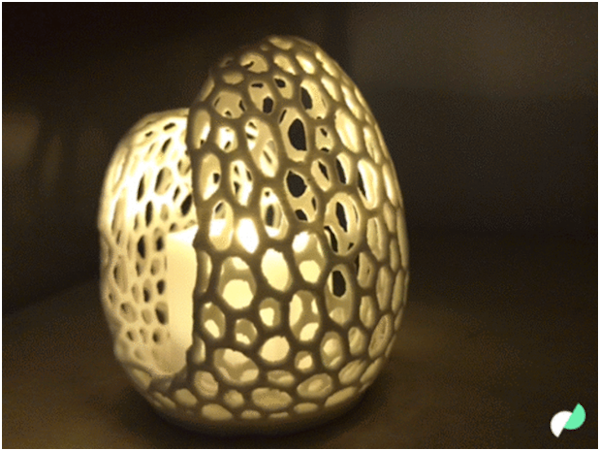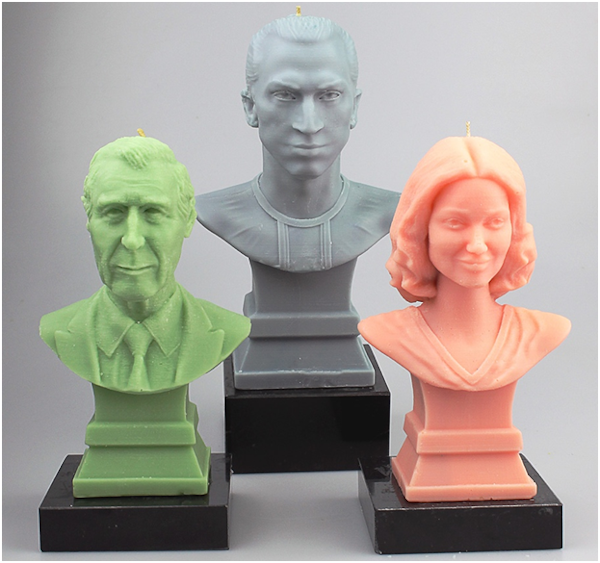
3D printed candles are lighting up the world. Candle companies are now using 3D printing technology to develop new and improved candle production processes, in addition to product testing. Candle molds, holders and covers can be made using 3D printing methods. The U.S. retail candle industry is estimated at approximately $3.14 billion annually, and with the advancement of 3D printing technology, the candle industry is continuing to grow.
One of the reasons 3D printing is being integrated in the candle industry is for its ability to overcome design limitations for new products and improve the production process. Companies can utilize 3D printing to create custom candle molds and candle holders to achieve more intricate shapes and details in end products. Using CAD software, a designer can create a completely custom candle mold and then actualize the design with 3D printing. Due to its versatility, low cost and melting point, PLA plastic could be then used to cast a higher-quality silicone mold, which has the ability to engulf any fine details of the print, and produce paraffin wax candle products. Integrating 3D printing is a viable solution for producing candles and candle holders with more complex structures and geometries.
Companies and retailers that are using 3D printing to design new candle products may be eligible for federal R&D Tax Credits.
Le Bon Marché

The Research and Development Tax Credit
Enacted in 1981, the now permanent Federal Research and Development (R&D) Tax Credit allows a credit that typically ranges from 4%-7% of eligible spending for new and improved products and processes. Qualified research must meet the following four criteria:
- Must be technological in nature
- Must be a component of the taxpayer’s business
- Must represent R&D in the experimental sense and generally includes all such costs related to the development or improvement of a product or process
- Must eliminate uncertainty through a process of experimentation that considers one or more alternatives
Eligible costs include US employee wages, cost of supplies consumed in the R&D process, cost of pre-production testing, US contract research expenses, and certain costs associated with developing a patent.
On December 18, 2015, President Obama signed the PATH Act, making the R&D Tax Credit permanent. Beginning in 2016, the R&D credit can be used to offset Alternative Minimum tax for companies with revenue below $50MM and, startup businesses can obtain up to $250,000 per year in payroll tax cash rebates.
Conclusion
The candle industry is one of many that can benefit from 3D printing technology. It can be used to improve candle production processes, whether it is for prototyping purposes, creating custom molds or producing the end product itself. Companies that are integrating 3D printing methods to create new or improved products and processes should consider taking advantage of federal R&D Tax Credits.
